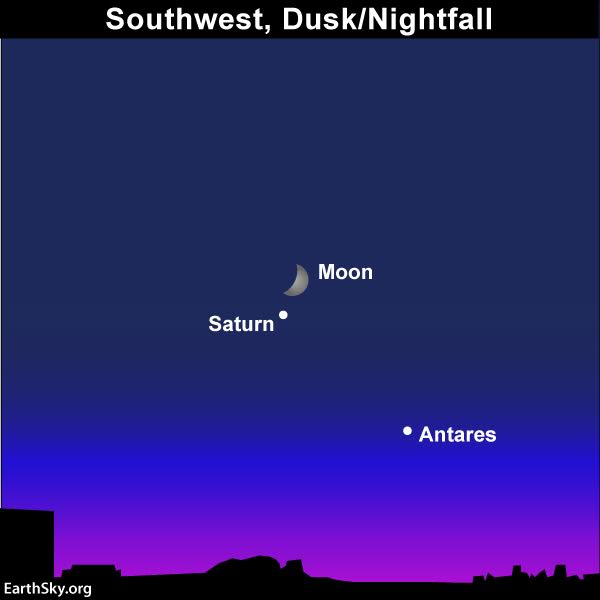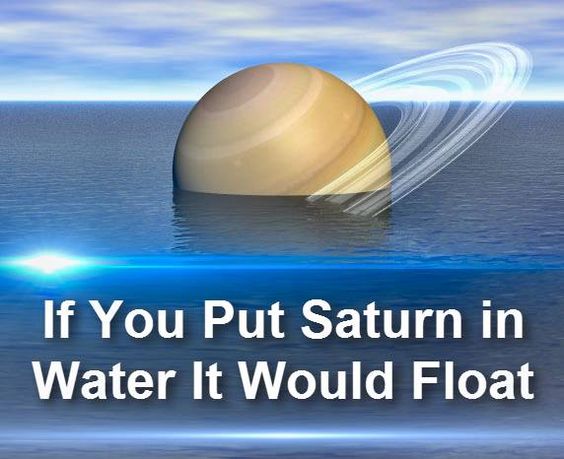
Tonight – September 26, 2017 – as soon as darkness falls, no matter where you are on Earth, look for the waxing crescent moon. The bright golden light near it will be the planet Saturn. The moon and Saturn will sink downward toward the sunset point as evening deepens. As seen from across the globe, they’ll set beneath your horizon by mid-evening. In other words, your best view of the moon and Saturn happens at nightfall, while the two beam highest in the sky.
Nightfall also presents the best time to view Saturn’s gorgeous rings, so if you have a small telescope, bring it on out!
It’s often said that Saturn would float in water – that is, if you could find an ocean of water that’s wide enough and deep enough to contain it. Why do people say this? It’s because Saturn – 6th planet outward from our sun – has a very low density, lowest of all the planets in our solar system. Saturn is the only planet in our solar system that’s less dense than water, having about 70% its density.

So, yes, in theory, Saturn would float on water. On the other hand, it’s also been argued that Saturn would break apart and its core would sink in any ocean large enough to hold it!
By the way, do you know which planet of our solar system is the most dense? It’s our planet Earth, with over 5 times the density of water.
But all four inner terrestrial planets – the rocky words orbiting the sun inside the asteroid belt – are quite dense: Mercury, Venus, Earth and Mars. The four outer planets – the gas and ice giants orbiting the sun outside the asteroid belt – are less dense, although much larger than the inner planets: Jupiter, Saturn, Uranus and Neptune.

Mean density of solar system planets (density of water = 1.000 kilogram per cubic meter)
Inner planets:
Mercury: 5.427
Venus: 5.243
Earth: 5.514
Moon: 3.340
Mars: 3.933Outer planets:
Jupiter: 1.326
Saturn: 0.687
Uranus: 1.271
Neptune: 1.638
Source: Planetary fact sheet

Bottom line: Around the world tonight – September 26, 2017 – look for the waxing crescent moon to pair up with Saturn, the solar system’s least-dense planet.











